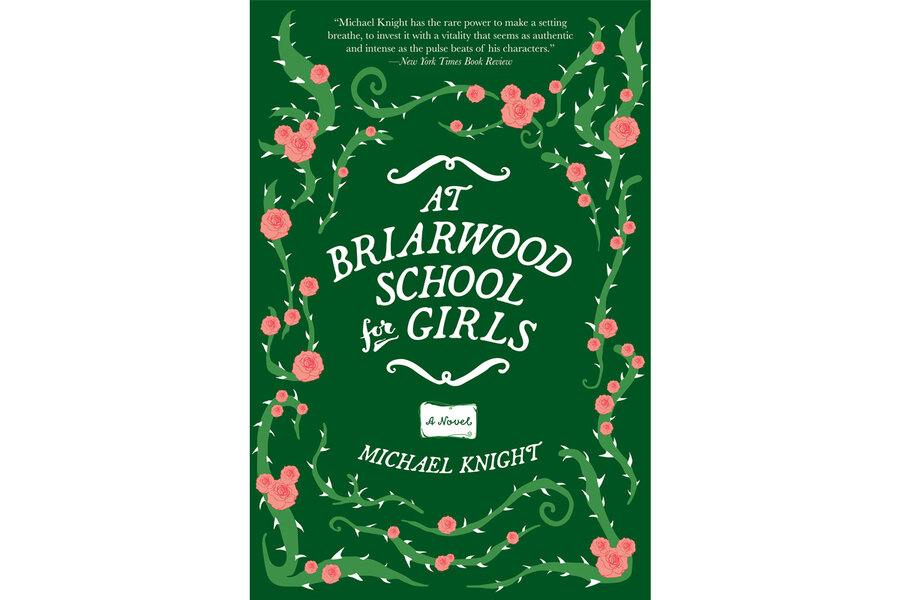The boarding school (after)life
Loading...
In this uneven novel, Lenore Littlefield, a junior at the Briarwood School for Girls in rural Virginia, has a secret - one that we, the readers, know by the end of the first short chapter. She is pregnant, and she hasn’t shared this information with her friends, her divorced parents, or, apparently, the boy involved.
One day, though, she blurts the information to Mr. Bishop, her history teacher who lives alone with his dog in the drab faculty duplexes on one side of the boarding school’s oak-shaded campus. This unintentional confidence puts in motion a series of improbable events and relationships involving everything from the hauntings of a dormitory ghost to the Disney Company’s eyebrow-raising efforts to build an American history theme park, complete with an underground railroad adventure ride. Featured in these machinations is an emotionally flat basketball-turned-drama coach, the bad-girl roommate, and a famous but reclusive Briarwood alum, a playwright who seems to be modeled on another enigmatic southern writer, Harper Lee.
In short, there’s a lot going on in At Briarwood School for Girls.
It is to Michael King’s credit that he manages to wrangle all this busyness. He connects the threads, and keeps readers eager to understand more about the plot twists and the individuals involved. At the same time, though, there is a gnawing sense of a book not quite there. It is a malaise, similar to that which seeps into the bored outings that Lenore takes with her friends, when they break curfew for no good reason.
Perhaps this sense has to do with the setting, a Virginia landscape where history and tradition are rich but in constant decay. Or maybe it is the timing, 1994, with all of its grunge and undirected Gen-X angst, uncomfortably buttoned into a plaid boarding-school skirt. Perhaps this is, in some way, Mr. King’s point – that history repeats and repeats, not in any revelatory, progressive way, but in the manner of life-cycles; predictable, circular, at once beautiful and mundane.
Still, one can’t help but feel that the gnawing dissatisfaction with Briarwood also stems from the contrast between King’s often exquisite writing and a cast of characters that are never fully developed.
And King’s writing is, indeed, gorgeous. The influence of the best of southern novels comes through in his work; those dripping details of place that somehow capture the leaf-filtered light, the organic decay, the heavy weight of unsaid words and unsaid past. Briarwood girls are “all hair and hands from that distance, the whole unruly flock of them veiled in puffs of winter breath,” he writes; the “old oaks lining Faculty Row like the canopy of an enormous, ruined tent.”
But within this well-crafted set piece even King’s main characters remain only beautiful caricatures. One never fully believes in Lenore; either that she can handle her situation as confidently and independently as she presents or that she could give only one paragraph of thought to the relationship that resulted in her situation. Nor does one have full confidence that this distance is intentional; it is hard to trust that King does not want us to know her deepest emotions when he shares her thoughts about her ongoing dialogue with the Briarwood ghost.
Many of the other characters are equally difficult; they become so improbable that one isn’t quite confident that King isn’t teasing us. Would the girls’ basketball coach really blow her whistle at play rehearsal to correct on-stage mishaps? Wouldn’t Mr. Bishop have had some motivation to teach at Briarwood in the first place, or some personal life at all? Would Briarwood’s long-term headmistress really have sold out the campus to Disney for $50,000, even if a new computer lab was promised in return? (Living, as I do, in a boarding school community, I know that the price is wrong, if nothing else. Even with inflation.)
But the undercurrents of “Briarwood” are too serious, and too explicitly sincere at times, to release us into the lightness of spoof.
By the end of the book, one feels most poignantly about the Briarwood School itself, the landscape that King has created, as much as the characters who occupy it.









